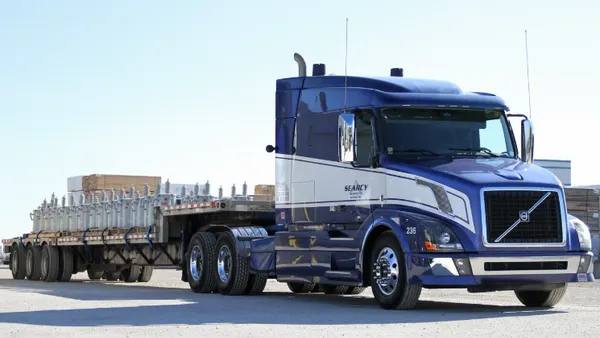Schneider National executives said Tuesday that securing a new West Coast rail partner was a necessary step to meet the carrier’s goal of doubling its intermodal business by 2030.
With its contract ending with BNSF at the end of the year, a door opened for the Wisconsin-based intermodal and logistics services provider to ink a new deal with Union Pacific. The contract with Schneider was one of several new agreements Union Pacific secured with other trucking firms in late 2021.
Deciding to end its 30-year relationship with BNSF was not easy, said Schneider President and CEO Mark Rourke during the Stephens Investment Conference Nov. 15. But Union Pacific, combined with Schneider’s partnership with CSX, offered more opportunities for the trucking company to grow its intermodal sector and compete with rivals.
“We want to put ourselves in the best competitive position to take advantage of what we think is some real advantages that we bring to the marketplace with our own container chassis and our company dray model,” he said. “And so, what we were after was as much distinction as we could in that model from our primary competitor in the West.”
J.B. Hunt is also focusing on growing intermodal, and Schneider’s departure from BNSF is expected to free up capacity for its rival. Shelley Simpson, president of J.B. Hunt, said at the same investors conference that “one of the biggest growth opportunities presented (to us) since the last great recession is in intermodal.”
Still, J.B. Hunt isn’t necessarily seeking to absorb the capacity opened on BNSF by Schneider’s looming departure, with Simpson saying the carrier is already competitive within its highway services.
“There’s plenty of business operating on the highway that we can provide on average a nearly 29.5% savings, so there’s plenty of opportunity just on the highway side to talk to our customers,” she said during the Stephens Investment Conference. “So, if (customers are) doing business with Schneider today, I assume (they will continue) to do business there, but certainly if they want to have a conversation, we’ll be engaged in that.”
Rourke said Schneider has spent the year talking with current and potential customers about what its new partnership with Union Pacific offers. He added the company has most importantly gained more access to trains.
“We have more steel wheel connections with our CSX partner, which is performing really, really well in the East,” he said. “So, we're now not going to be taking people resources to rubber trade in these key gateways because we have more connections, which is a better customer experience, a better cost position and quicker transits when we can do that.”
Rourke added his company gains more access to trains through Union Pacific.
“We have railroad that has many more starts, six- to seven-day trains as opposed to what we currently enjoy,” he said. “So, we'll be able to pick up transit and coverage by a number of our key lanes by having more train starts and so you put all of that together in our uniqueness of that asset model between the UP and the CSX, it became a compelling story for us to make the change.”
Rourke also said that the Union Pacific partnership will allow Schneider to expand intermodal in the West Coast, where “we felt we were under living our potential.”
“So again, we think we have the best execution map and model because of what we're focused on,” Rourke said. “And we're no longer sitting in the second seat behind a competitor on the other railroads.”












